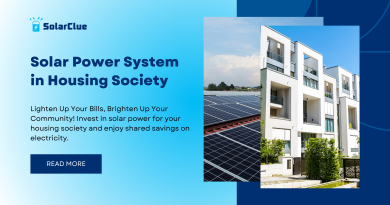How Many Solar Panels To Power A Mobile Home
Powering a mobile home with solar panels is an efficient and sustainable way to achieve energy independence. However, determining the optimal number of panels requires understanding your mobile home’s energy consumption, location, and specific energy needs. This blog provides a step-by-step approach to calculating the number of solar panels needed, taking into account factors such as battery storage, inverter sizing, and budget considerations.
Table of Contents
- 1 Understanding Mobile Home Energy Consumption
- 1.1 Calculating Solar Panel Wattage Based on Energy Needs
- 1.2 Optimizing Panel Placement for Maximum Sunlight Exposure
- 1.3 The Role of Battery Storage in Powering Mobile Homes
- 1.4 Considering Location and Climate Factors
- 1.5 Balancing System Size with Energy Needs and Budget
- 1.6 The Impact of Inverter Efficiency on System Performance
- 1.7 Additional Factors Affecting Solar Panel Requirements
- 1.8 Tools and Software for Solar Panel Sizing
- 1.9 Case Studies of Successful Solar-Powered Mobile Homes
- 1.10 Factors Influencing Solar Panel Requirements for Mobile Homes
- 1.11 Conclusion
- 1.12
- 1.13 FAQ Section
Understanding Mobile Home Energy Consumption
Average Energy Use:
- Daily Consumption: The average energy consumption for a mobile home typically ranges between 20-50 kWh per day, depending on the size of the home, the number of occupants, and the appliances used.
- Energy-Efficient Appliances: Using energy-efficient appliances can significantly reduce overall energy consumption, allowing for a smaller solar panel system.
Appliances and Usage:
- Common Appliances: Major energy consumers include HVAC systems, refrigerators, water heaters, and cooking appliances.
- Example: If your mobile home uses 30 kWh/day, you would need a solar system that can produce at least this amount of energy daily.
Calculating Solar Panel Wattage Based on Energy Needs
Basic Calculation:
- Formula: Number of Panels=Daily Energy Consumption (kWh)Panel Wattage (kW)×Peak Sun Hours
- Example: If your mobile home consumes 30 kWh/day, and you’re using 350W (0.35 kW) solar panels in an area with 5 peak sunlight hours:
- Daily Energy Production per Panel: 0.35 kW×5 hours=1.75 kWh/day per panel
- Number of Panels Needed: 30 kWh/day1.75 kWh/day per panel≈17.14 panels
- Rounded Up: 18 panels would be required.
Optimizing Panel Placement for Maximum Sunlight Exposure
Orientation and Tilt:
- Optimal Positioning: Panels should be oriented to face south in the northern hemisphere, or north in the southern hemisphere, with a tilt angle that matches the latitude of your location.
- Avoiding Shading: Ensure that panels are placed in an area free from shading throughout the day to maximize efficiency.
Mounting Options:
- Rooftop vs. Ground Mount: Depending on the available space, solar panels can be mounted on the roof of the mobile home or on the ground nearby.
The Role of Battery Storage in Powering Mobile Homes
Importance of Battery Storage:
- Energy Independence: Batteries store excess energy generated during the day for use at night or during periods of low sunlight, ensuring continuous power supply.
- Sizing the Battery: The size of the battery storage system depends on your energy needs and how long you need power without sunlight.
Example:
- Battery Calculation: If your mobile home uses 30 kWh/day, you might consider a battery system with a capacity of 30-50 kWh to cover energy needs during cloudy days or at night.
Considering Location and Climate Factors
Sunlight Availability:
- Geographic Influence: The number of peak sunlight hours varies by location and season, influencing the size of the solar system needed.
- Seasonal Variations: In regions with significant seasonal changes, you may need to account for lower sunlight availability during winter months.
Weather Conditions:
- Impact of Climate: Frequent cloudy or rainy weather can reduce solar panel efficiency, requiring a larger system to meet energy needs.
Balancing System Size with Energy Needs and Budget
System Sizing:
- Cost vs. Need: Larger systems generate more power but come with higher upfront costs. Balance the number of panels with your budget while meeting your energy needs.
- Efficiency Trade-offs: Higher efficiency panels may reduce the number of panels needed, potentially saving space and installation costs.
The Impact of Inverter Efficiency on System Performance
Inverter Function:
- Conversion Efficiency: Inverters convert the DC power generated by solar panels into AC power used by most appliances. Inverter efficiency typically ranges from 90% to 98%.
- Sizing the Inverter: The inverter must be appropriately sized to handle the total wattage of your solar panel system.
Example:
- If your system is designed to produce 30 kWh/day, and your inverter is 95% efficient:
- Adjusted Energy Needs=30 kWh/day0.95≈31.58 kWh/day.
- This adjustment might slightly increase the number of panels required.
Additional Factors Affecting Solar Panel Requirements
System Losses:
- Wiring and Connection Losses: Energy losses can occur due to the resistance in wires and connections. Factor in an additional 5-10% to account for these losses.
Energy Usage Patterns:
- Peak Usage: Consider when your energy usage is highest and ensure your system can meet these demands, especially during peak hours.
Tools and Software for Solar Panel Sizing
Solar Calculators:
- Online Tools: Various online solar calculators can help estimate the number of panels needed based on location, energy consumption, and other factors.
Case Studies of Successful Solar-Powered Mobile Homes
Example Project:
- Location: A mobile home in Arizona using 25 kWh/day.
- System Design: The homeowner installed 15 monocrystalline panels (each 350W) and a 40 kWh battery storage system.
- Outcome: The system meets daily energy needs year-round, with excess energy stored for nighttime use.
Factors Influencing Solar Panel Requirements for Mobile Homes
| Factor | Description | Impact on Solar Panel Requirements |
|---|---|---|
| Energy Consumption | Daily energy usage of the mobile home (kWh/day) | Higher consumption requires more solar panels |
| Sunlight Availability | Average daily sunlight hours at the installation site | More sunlight reduces the number of panels needed to generate sufficient power |
| Battery Storage | Capacity to store excess energy for nighttime use | Sufficient battery storage can reduce the number of panels needed |
| Panel Placement and Orientation | Positioning of solar panels to maximize exposure to sunlight | Optimal placement and orientation can increase panel efficiency and reduce the number of panels needed |
| Inverter Efficiency | The efficiency of the inverter in converting DC to AC power | Higher efficiency inverters reduce energy losses, potentially reducing the number of panels required |
| System Losses | Energy losses due to wiring, connections, etc. | System losses require adding extra panels to compensate |
| Location and Climate | Geographic location and climate conditions affecting solar radiation | Locations with more sunlight require fewer panels |
| Budget Considerations | The cost of the system relative to energy needs | Balancing the number of panels with budget constraints while meeting energy requirements |
Conclusion
Determining the optimal number of solar panels to power a mobile home involves careful consideration of energy consumption, location, and system components like batteries and inverters. By accurately calculating your energy needs and optimizing your system design, you can achieve a cost-effective and sustainable solar-powered solution for your mobile home. This guide provides the essential knowledge and tools to help you make informed decisions and maximize the benefits of solar energy.
Here at SolarClue®, we offer a smart, practical, and “beautiful” solution. You will be answered for all the questions related to Solar.
We provide all kinds of brands that are the Best Solar panels in India.
If you are the one who is planning for the solar power system. Don’t hesitate to contact our team!
Looking forward to empowering you with solar energy, just like hundreds of our other clients!
FAQ Section
1. How do I determine the energy consumption of my mobile home?
Check your electricity bills for monthly usage and divide by 30 to estimate daily energy consumption. Alternatively, you can use an energy monitor to track your consumption more precisely.
2. How do I calculate the number of solar panels needed for my mobile home?
Use the formula: Number of Panels=Daily Energy Consumption (kWh)Panel Wattage (kW)×Peak Sun Hours. This will give you the number of solar panels needed based on your energy consumption and available sunlight.
3. What role does battery storage play in a solar-powered mobile home?
Batteries store excess solar energy generated during the day for use at night or during periods of low sunlight, ensuring a continuous power supply.
4. How does location affect the number of solar panels required?
Locations with more peak sunlight hours require fewer panels to generate the same amount of energy. Climate and seasonal variations can also impact panel output.
5. What is the impact of inverter efficiency on my solar system?
Inverter efficiency affects how much of the generated DC power is converted into usable AC power. Lower efficiency inverters may require additional panels to compensate for energy losses.


